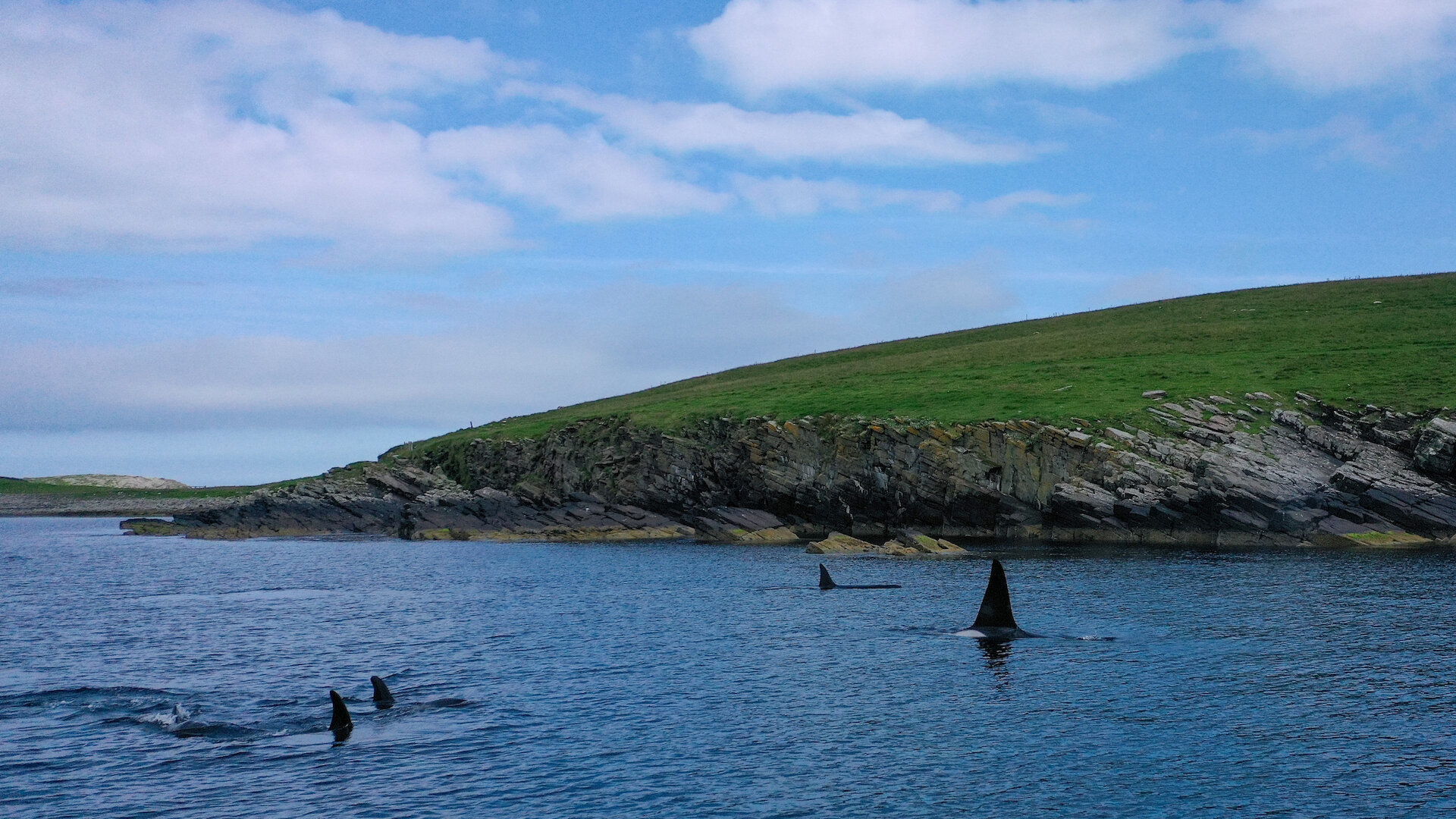Stormborn is a three-part wildlife series that recently appeared on BBC One. Narrated by actor Ewan McGregor, it charts the lives and struggles of animals living in the harsh climates of the North. Made by Maramedia, the same production company that produced last year's successful Wild Shetland series, it captures footage of otters, arctic foxes, grey seals, orca whales, and puffins, surviving in the remote, northern edges of the Atlantic Ocean.
Filming for Stormborn took place in Iceland, Norway and Scotland, including Shetland. Maramedia once again recruited local natural history experts and filmmakers Brydon Thomason and Richard Shucksmith, alongside drone camera operator Nick McCaffrey to capture some spectacular footage of Shetland's natural wildlife and spectacular coastlines. Shetland footage appears in all three episodes of Stormborn, although in episodes 2 and 3 it is referred to simply as Scotland.
"Most of my footage was linked to the drone shots of orca and, in particular, shots of the neesic (aka harbour porpoise) hunt sequence in episode 1," says Nick. "There are a number of drone shots of neesics in the build up to that story that I captured too.
"Wildlife sequences are very challenging things to put together, you only have moments to capture a behaviour and you often only have one camera angle to do that with. With orca, when you’re shooting from the shore you have to make an educated guess where to put yourself in terms of the orca’s predicted course and try to predict what predator and prey will do. You also have to try guess where any action may happen and then, from that, try put yourself in a position where you can maximise your chances of capturing that specific moment. Sometimes you get it right, sometimes you don’t."
The job of the wildlife filmmaker might seem glamourous but it takes a lot of planning and patience, particularly in a place like Shetland where the weather and conditions can be so unpredictable. You have to be quick to act if the wildlife you wish to film is sighted, while at the same time be prepared to wait for hours to capture the perfect shot.
"Filming Orca hunting behaviour is extremely challenging," says Nick. "You can stay with a pod for most of a day and observe what seem to me ‘moods’. Sometimes they seem to be in a flat-out hunt mode and other times they just appear to be cruising around. So many variables have to come together to capture a shot, the weather has to be good, the sea conditions have to allow for clear footage and you have to guess not only what an unpredictable predator is going to do, but also figure out what its prey is likely to do in response. Then you have to think about where to put yourself to give you the best chance of actually capturing anything.
"You often have to haul your gear some distance over headlands or peat bogs to try get to the ideal location. You can walk for hours and drive many miles in a day. My gear often entails two drones, controls and as many batteries as I can manage. It's heavy and in the peak of summer it can be exhausting and the days are very, very long."
